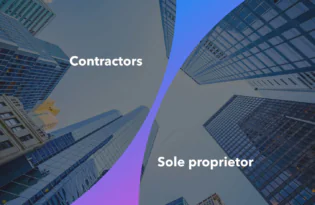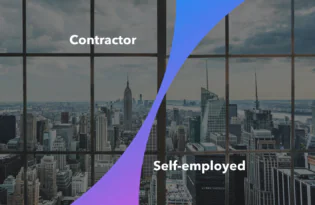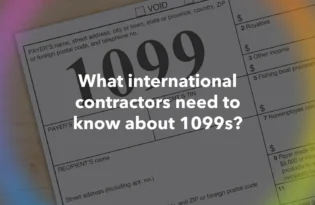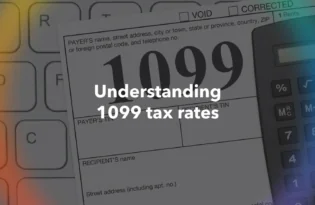AOR vs EOR: How are they different?
Our latest guide breaks down the key differences so you know exactly when to use each—whether you’re scaling with freelancers or full-time talent.

As more businesses start hiring across borders, the whole process can start to feel like alphabet soup. You’ve got acronyms flying left and right, and it’s not always obvious what each one actually does. One of the big questions companies run into is whether they need an Agent of Record (AOR) or an Employer of Record (EOR).
And here’s the thing: they’re not interchangeable. Understanding AOR vs EOR is key to staying compliant and making sure you’re using the right tool for the job.
Below, we’ll break down how each model works, what problems they solve, and how to tell which one fits your hiring situation best.
AOR vs EOR: What’s the difference?
Here’s a breakdown of the key differences between AOR vs EOR, with additional details provided in the sections below the table.
| Feature | AOR | EOR |
|---|---|---|
| Worker Type | Independent contractors | Full-time or long-term employees |
| Legal Employer? | ❌ No | ✅ Yes |
| Use Case | Project-based or short-term engagements | Ongoing employment or high-control roles |
| Tax Obligations | Contractor files their own taxes | EOR handles local tax withholding |
| Compliance Protection | Helps prevent misclassification | Assists with employment law compliance |
| Benefits Administration | ❌ Not provided | ✅ Guidance for benefits coverage as per local law |
What is an Agent of Record (AOR)?
An AOR is a third-party partner that helps businesses comply with the engagement of independent contractors. They offer support with essentials like onboarding, tax form collection, global payments, and worker classification per local laws.
Common AOR Services Include:
- Contractor agreement generation and management support
- Multi-currency payments and invoicing
- Mitigating misclassification risks
- Guidance with tax documentation (e.g., 1099s or local equivalents)
The AOR acts as a bridge between you and the international contractor, but does not employ the worker.
What is an Employer of Record (EOR)?
An EOR is a third-party provider that acts as the legal employer of full-time or long-term workers. This lets you access global talent without setting up a legal entity in each country.
Common EOR Services Include:
- Issuing compliant employment contracts
- Running local payroll and paying taxes
- Managing benefits and statutory contributions
- Handling terminations and legal compliance
Unlike an AOR, the EOR is the worker’s official employer on paper, even though they work directly for your company day-to-day.
When to use an AOR vs EOR
Knowing when to use AOR vs EOR is crucial since they serve entirely different purposes. Here’s where and when they should be used.
Use an AOR if:
- You’re hiring freelance talent, independent contractors, or gig workers.
- The relationship is project-based or time-limited.
- You want fast onboarding and low overhead.
Use an EOR if:
- You need to hire in a new country, but don’t want to set up a local entity.
- The role is full-time, ongoing, or high-control.
- You’re offering benefits, paid leave, or managing performance reviews.
At the end of the day, it’s about matching the tool to the job. Trying to manage global contractors with an EOR, or employees with an AOR, is like using a wrench when you need a drill.
Using the wrong model may lead to compliance risks, strained relationships, or wasted time and cost.
That’s where having a strong workforce management platform comes in. It gives you the ability to scale across borders while keeping both contractors and employees properly supported.
That’s exactly what Payoneer Workforce Management brings to the table.
Unified support in 160+ countries
Payoneer Workforce Management helps you navigate the differences between AOR vs EOR with combined support for both under one roof.
Whether you’re hiring a freelance designer in India or a full-time engineer in Thailand, we help you streamline the administrative burden.
Here’s what you get with Payoneer Workforce Management:
- A global platform with multi-currency payments and tax administration support
- Legally compliant agreements tailored to contractor or employee classification
- A unified dashboard from onboarding, payroll/ payments, till offboarding
- 24×5 customer support, globally
When you partner with Payoneer Workforce Management, you have the flexibility to scale your workforce while staying compliant.
If you’re ready to take charge of your workforce, reach out today for a free demo.
Disclaimer
- Skuad Pte Limited (a Payoneer group company) and its affiliates & subsidiaries provide EoR, AoR, and contractor management services.
- The information in this article/on this page is intended for marketing and informational purposes only and does not constitute legal, financial, tax, or professional advice in any context. Payoneer and Payoneer Workforce Management are not liable for the accuracy, or reliability of the information provided herein. Any opinions expressed are those of the individual author and may not reflect the views of Payoneer or Payoneer Workforce Management. All representations and warranties regarding the information presented are disclaimed. The information in this article/on this page reflects the details available at the time of publication. For the most up-to-date information, please consult a Payoneer Workforce Management representative or account executive.
- Availability of cards and other products is subject to customer’s eligibility. Not all products are available in all jurisdictions in the same manner. Nothing herein should be understood as solicitation outside the jurisdiction where Payoneer Inc. or its affiliates is licensed to engage in payment services, unless permitted by applicable laws. Depending on or your eligibility, you may be offered the Corporate Purchasing Mastercard, issued by First Century Bank, N.A., under a license by Mastercard® and provided to you by Payoneer Inc., or the Payoneer Business Premium Debit Mastercard®, issued and provided from Ireland by Payoneer Europe Limited under a license by Mastercard®.
Related resources
Latest articles
-
Planning to hire employees in France? Here’s a quick guide
Looking to hire employees in France for your U.S. company? Learn about employment in France and how Payoneer Workforce Management makes it simple to hire in France.
-
Planning to hire employees in Spain? Here’s a quick guide
Are you looking to hire employees in Spain? Learn about employment in Spain and how Payoneer Workforce Management can help American companies hiring in Spain.
-
How to hire employees in the Netherlands
Looking to hire employees in the Netherlands for your U.S. company? Learn about employment in the Netherlands and how Payoneer Workforce Management can help hire in the Netherlands.
-
How to hire employees in Australia
Looking to hire employees in Australia for your US company? Learn about employment in Australia and how Payoneer Workforce Management makes it easy to hire in Australia.
-
Planning to hire employees in Germany? Here’s a quick guide
Are you looking to hire employees in Germany? Learn about hiring in Germany and how Payoneer Workforce Management can help U.S. companies hiring in Germany.
-
Planning to hire employees in the Philippines? Here’s a quick guide
Wondering how an American company hires employees in the Philippines? Our guide covers how to hire employees in the Philippines and how we can help.
Disclaimer
Nothing herein should be construed as if Payoneer Inc. or its affiliates are soliciting or inviting any person outside the jurisdiction where it operates/is licensed to engage in payment services provided by Payoneer Inc. or its affiliates, unless permitted by applicable laws. Any products/services availability are subject to customer’s eligibility. Not all products/services are available in all jurisdictions in the same manner. Depending on your eligibility, you may be offered with the Corporate Purchasing Mastercard, issued by First Century Bank, N.A., under a license by Mastercard® and provided to you by Payoneer Inc., or the Payoneer Business Premium Debit Mastercard®, issued and provided from Ireland by Payoneer Europe Limited under a license by Mastercard. The Payoneer Business Premium Debit Mastercard® cannot be used at merchants or ATMs in Hong Kong or for HKD payments. If you are located in the EEA, all Payoneer Services will be provided to you by Payoneer Europe Limited, trading as Payoneer and regulated by the Central Bank of Ireland.
The information in this document is intended to be of a general nature and does not constitute legal advice. While we have endeavored to ensure that the information is up to date and correct, we make no representations or warranties of any kind, express or implied, about the completeness, accuracy, reliability or suitability of the information. In no event will we be liable for any loss or damage including without limitation, indirect or consequential loss or damage, or any loss or damage whatsoever incurred in connection with the information provided.
















